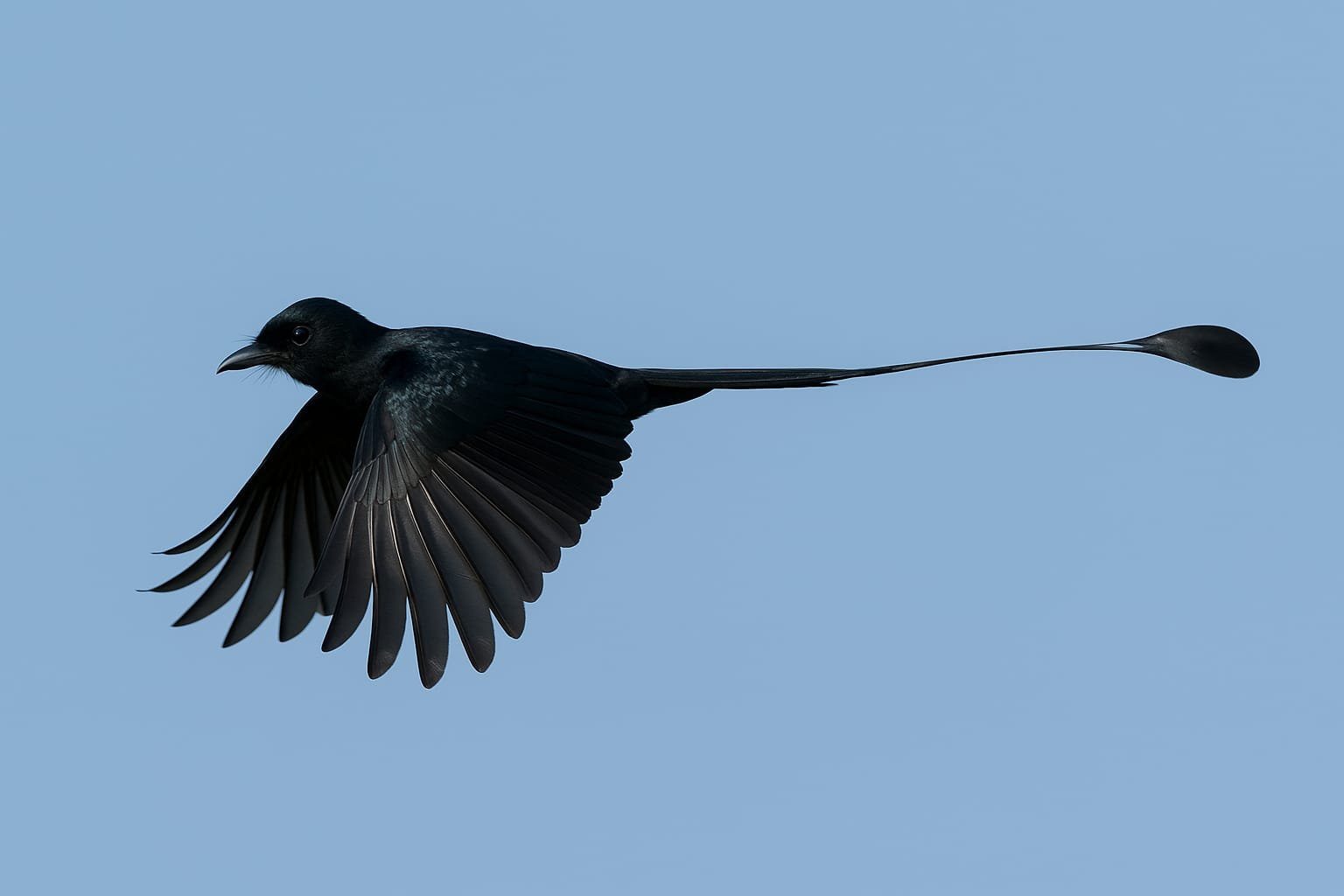
In a rare and unexpected turn of events, birders in Gurugram recorded the first-ever sighting of the Greater Racket-Tailed Drongo (Dicrurus paradiseus) within the district’s limits on 27th April 2025. The dramatic encounter unfolded in Jhanjhrola, a semi-arid agricultural patch far from the species’ typical Himalayan and forested terrain.
Spotted during the second phase of the Delhi Bird Atlas survey at 8:20 AM, the bird's appearance sent ripples of excitement through the local birding community. Arvind Yadav, an experienced birder who identified the species, recalled the challenge: “It was being chased by crows and black drongos, making it hard to follow, but we managed to get clear shots and confirm the Identification.”
Forest Royalty Meets Farmlands
The Greater Racket-Tailed Drongo is a striking, long-tailed bird known for its mimicry and association with dense forests, especially those of the Himalayan foothills, northeast India, and peninsular regions. That it should appear in Gurugram—a dry belt dominated by open fields and thorny vegetation—makes this sighting exceptional.
“This species usually prefers well-wooded, moist areas and descends only when snow falls in the higher altitudes,” said Yadav. It is considered an altitudinal migrant, not a long-distance one, and often strays into new regions due to weather disturbances or habitat shifts.
Rare Sightings in the NCR
Over the years, the Greater Racket-Tailed Drongo has been spotted only a handful of times in the National Capital Region. These include records from Surajpur (February 2023), Mangar Bani (2017 and 2022), and Usmanpur and Yamuna Khadar in Delhi (2006 and 2016 respectively). However, the Jhanjhrola encounter on 27th April 2025 is the first officially recorded instance within Gurugram’s boundaries.
Veteran birder Sudhir Vyas, author of Birds of the Delhi Area (2023), described the event as highly unusual: “This drongo is a vagrant to Delhi, not a regular visitor. But recent years have shown a slight increase in such sightings, especially in wooded zones near the city’s periphery.”
What Brought It Here?
Experts suggest that the bird may have been displaced due to extreme weather events or simply strayed during exploratory flight. “It’s rare to see one in such an open setting. Possibly, it was blown in by strong dust storms,” said Kanwar B Singh, another veteran birder. He noted that no prior sightings had been recorded in the Mangar forest near Gurugram either, making this a landmark record.
Singh emphasized that while the species does not undertake mass migration, its ability to mimic calls of other birds and adapt to new environments occasionally brings it into unlikely places.
Nature’s Rare Note
The appearance of such a forest specialist in Haryana’s dry belt serves as both a thrill for birders and a gentle ecological reminder. The Delhi Bird Atlas, a citizen science initiative, is helping map such unexpected shifts—whether driven by climate patterns, habitat loss, or chance.
With urbanization pressing hard on remaining green spaces, the drongo’s visit underscores the urgency of conserving bird habitats, even in peri-urban and rural transition zones. For birdwatchers, it’s a moment of awe; for environmentalists, a call to vigilance.

